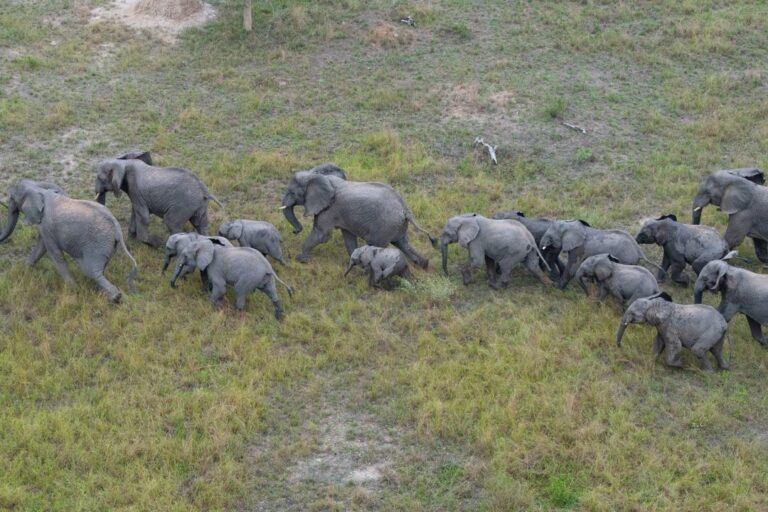Dar es Salaam. Authorities have continued with the relocation of elephants from human settlements in western Tanzania, in an ongoing exercise aimed at reducing escalating human-wildlife conflicts.
On Saturday, two more herds, comprising more than 100 elephants, were successfully driven from villages near residential areas and moved into the Burigi-Chato National Park.
The operation, conducted by wildlife officials under the Ministry of Natural Resources and Tourism, seeks to restore safety in affected communities and protect the animals from possible harm.
According to officials, the elephants had for months strayed into farmlands, destroyed crops, damaged property and occasionally threatened human life, prompting repeated appeals from local residents for government intervention.
The transfer of the elephants to Burigi-Chato, one of the country’s largest and ecologically diverse national parks bordering Rwanda and Uganda, marks a decisive step in addressing one of Tanzania’s most persistent conservation challenges.
The park, which spans more than 4,700 square kilometres, offers the elephants a safer habitat away from expanding human settlements that continue to encroach upon wildlife corridors.
Human-wildlife conflicts have become increasingly common across Tanzania and other parts of Africa due to rapid population growth, habitat fragmentation, and competition for resources such as water and land.
In regions surrounding national parks like Mikumi, Tarangire and Ruaha, reports of elephants trampling crops or attacking villagers have been recurrent, often sparking tension between communities and conservation authorities.
In neighbouring countries such as Kenya, Botswana and Zimbabwe, home to some of Africa’s largest elephant populations, similar relocation exercises and community-based conservation initiatives have been implemented to mitigate the problem.
Kenya’s wildlife authorities, for instance, have used translocation and electric fencing to prevent elephants from raiding farms, while Botswana has experimented with tracking technology and land-use planning to maintain balance between humans and wildlife.
In Tanzania, the government has increasingly adopted a coexistence strategy that combines relocation efforts with awareness campaigns and the creation of wildlife management areas, where communities take part in conservation while benefiting economically from tourism.
Officials say these measures not only safeguard people and property but also protect elephants, whose numbers in some regions have been recovering after years of poaching and habitat loss.
Saturday’s operation brings renewed hope to communities previously living in fear of wildlife incursions.
Local leaders have lauded the move, expressing optimism that it will restore normalcy to agricultural activities and enhance mutual coexistence between humans and wildlife in the long run.
Tanzania is home to one of the largest elephant populations in Africa, estimated at over 60,000, and remains a vital sanctuary for the species. Conservationists say that sustained efforts like the Burigi-Chato relocation exercise are crucial to ensuring that both people and elephants can thrive in harmony.







